The Plextor M8V SATA SSD Review: Toshiba 3D TLC In a Mainstream Drive
by Billy Tallis on March 20, 2018 8:00 AM ESTAnandTech Storage Bench - Light
Our Light storage test has relatively more sequential accesses and lower queue depths than The Destroyer or the Heavy test, and it's by far the shortest test overall. It's based largely on applications that aren't highly dependent on storage performance, so this is a test more of application launch times and file load times. This test can be seen as the sum of all the little delays in daily usage, but with the idle times trimmed to 25ms it takes less than half an hour to run. Details of the Light test can be found here. As with the ATSB Heavy test, this test is run with the drive both freshly erased and empty, and after filling the drive with sequential writes.

As with the Heavy test, the average data rate of the Plextor M8V on the Light test is a bit on the slow side, but the M8V does quite well under the extra pressure of running the test on a full drive.
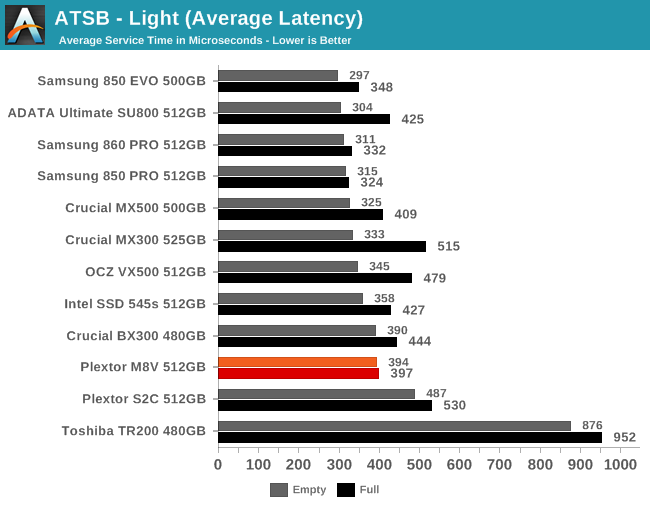
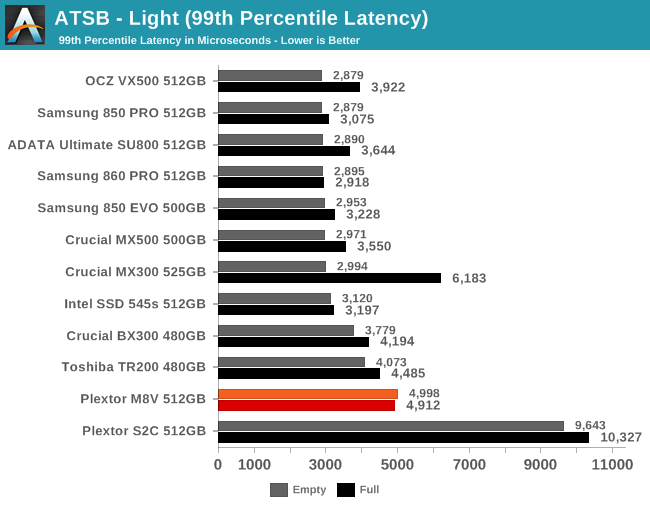
The average latencies from the Plextor M8V are a bit higher than normal, but not to a great extent, and the full-drive score is pretty good. The situation for 99th percentile latencies is worse, with the M8V showing much higher tail latencies than most current SATA SSDs.

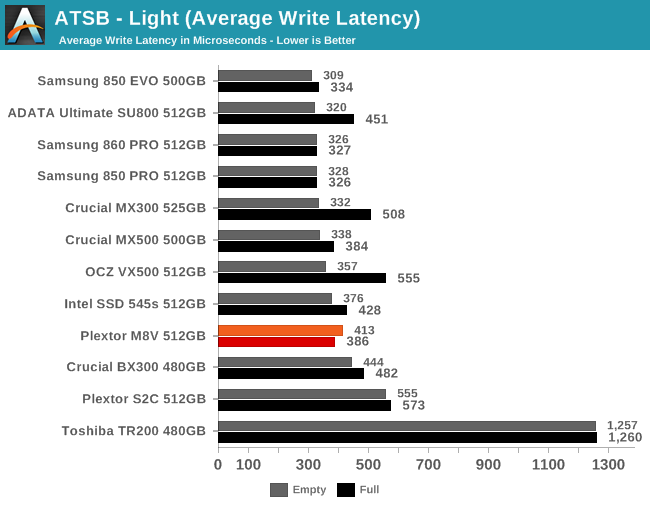
The average read and write latencies from the Plextor M8V are both a bit higher than most drives but not enough to be a noticeable problem. The average read latency is more clearly lagging behind the competitors.
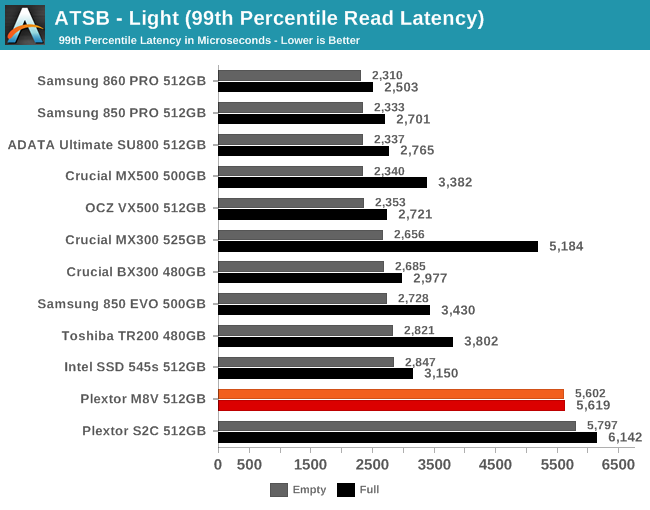

The 99th percentile read latency of the Plextor M8V is a problem—5.6ms is quite a bit slower than the 2-3ms that most SATA SSDs manage. The 99th percentile write latency of the M8V is also higher than most drives, but it doesn't stand out as such a clear outlier.
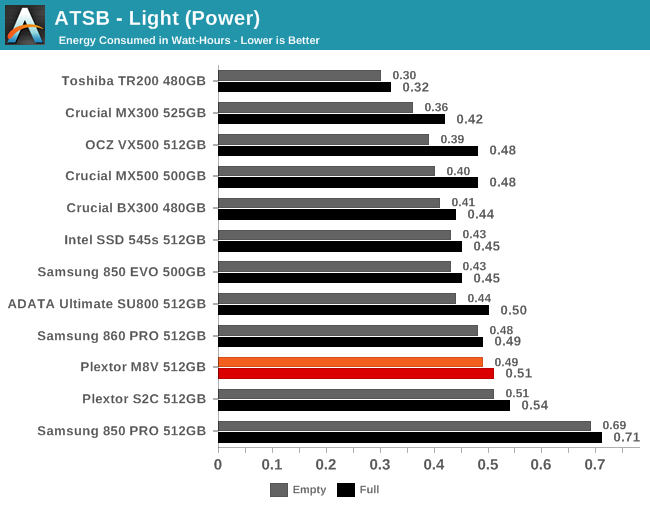
The energy usage of the M8V on the Light test is only slightly higher than normal for the other Silicon Motion-based drives, and for SATA SSDs in general.










8 Comments
View All Comments
edgineer - Tuesday, March 20, 2018 - link
What's the actual capacity of this drive, 476 GiB? I hate having to use a calculator/guessing.Billy Tallis - Tuesday, March 20, 2018 - link
As with any other 512GB drive, the usable capacity (before partitioning) is 512,110,190,592 bytes.Dragonstongue - Tuesday, March 20, 2018 - link
Crucial MX200 500GB ends up as 465gb usable Win 7 64 build after formatted for useCrucial MX100 256 ends up with 238GB usable
frenchy_2001 - Tuesday, March 20, 2018 - link
That would be because Windows displays GiB (2^30 bytes) and not GB (10^9 Bytes).https://en.wikipedia.org/wiki/Gibibyte
bug77 - Thursday, March 22, 2018 - link
During formatting, some space is reserved for the file system. That is not a limitation of the drive, nor does it make the drive have a smaller capacity.You don't like file system's overhead? Use a different file system. Oh wait, you can't do that on Windows :D
Holliday75 - Wednesday, March 21, 2018 - link
These new bots are everywhere. Been seeing them all over Facebook posting on a few of my favorite professional sports teams pages.FunBunny2 - Thursday, March 22, 2018 - link
but, but, but... Mark just promised that they've been driving the culture at Facebook for years, years I say, to improve user experience. don't you believe him?????leexgx - Sunday, March 25, 2018 - link
can you please fix on mobile view in "Print this article" the "Thanks to" box overrides page width limits so when scrolling up and down it sometimes go left and right